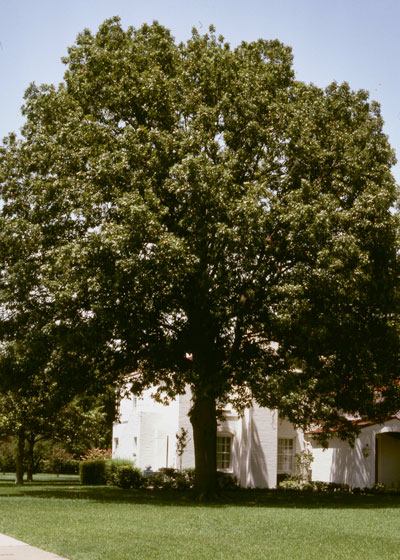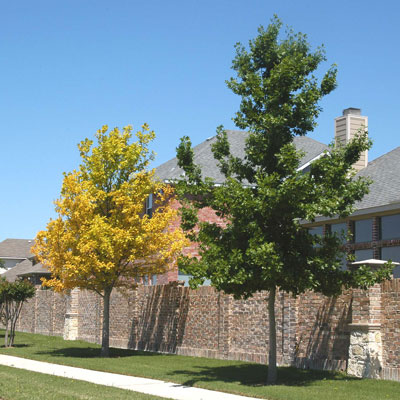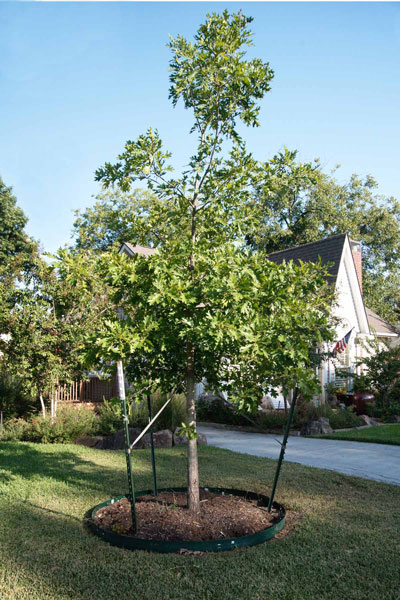Trees for Fall Color: Shumard Red Oak

Shumard red oaks in background, elms in foreground. (Collin County)
Wherever you live in this world, if there is an oak tree that grows there, it’s going to be one of the best landscaping trees you will find. For a big part of Texas, Shumard red oak would fall into that category. It’s absolutely a grand choice 12 months a year and 100 years a century. (That’s because it will live that long or longer.)
Shumard red oak (Quercus shumardii) is native to the central third of Texas, in habitats ranging from chalky, caliche hillsides to deep clay prairie soils.
It’s a large species, growing to 50 to 60 feet tall and wide.

Mature red oak shows true size.
Its leaves are dark green during the growing season, turning to shades of crimson red, burgundy, yellow and orange in the fall. Some falls it shows much better color than others, depending on rainfall/irrigation, fertilization and exposure to cold. Its leaves may or may not fall after the color fades. Sometimes the abscission layer doesn’t form right away and the leaves may persist on the twigs for a month or two longer. (Not a big deal.)
Buy Shumard red oaks from local independent retail garden centers (people who really know their plants) to ensure that you’re getting a genuine Shumard. The similar species pin oak (Quercus palustris) is poorly adapted to alkaline soils and areas with low humidity. The trees look extremely similar when they’re young, and it’s not until 10 or 15 years later that you realize that your pin oak is doomed. You simply can’t get enough iron into the tree to correct the shortages. Big box stores buy nationally, and their buyers aren’t always aware that they’re being sold the wrong species.

Pin oak on left is dying from iron deficiency (not really controllable), while Shumard red oak on right is thriving. (Allen TX)
Plant Shumard red oaks in full sun and where they will have ample room to spread out those 40 to 60 feet. Keep them that far away from power lines, rooflines and other trees. If you don’t have enough room for them, plant something else that stays smaller.
One critical note: Young Shumard red oaks must have their trunks wrapped with paper tree wrap for their first two or three years. When they’re in nurseries, they shade one another, but when we plant them out in the open, the trunks are exposed to hot Texas sun. The trunks crack and split open, and borers and decay move in to kill the tree. The new trunks simply must be wrapped. It’s non-negotiable! (Same with Chinese pistachios.)

Young Shumard red oak has been staked well, but it is lacking the required tree wrap.
